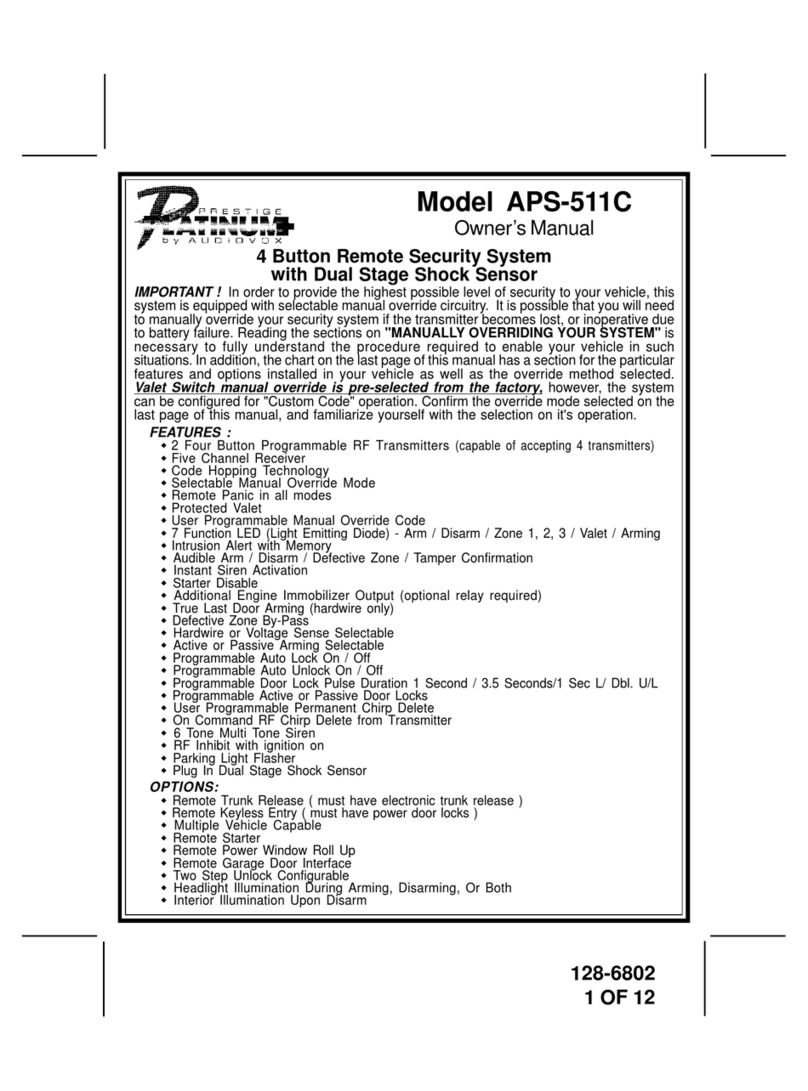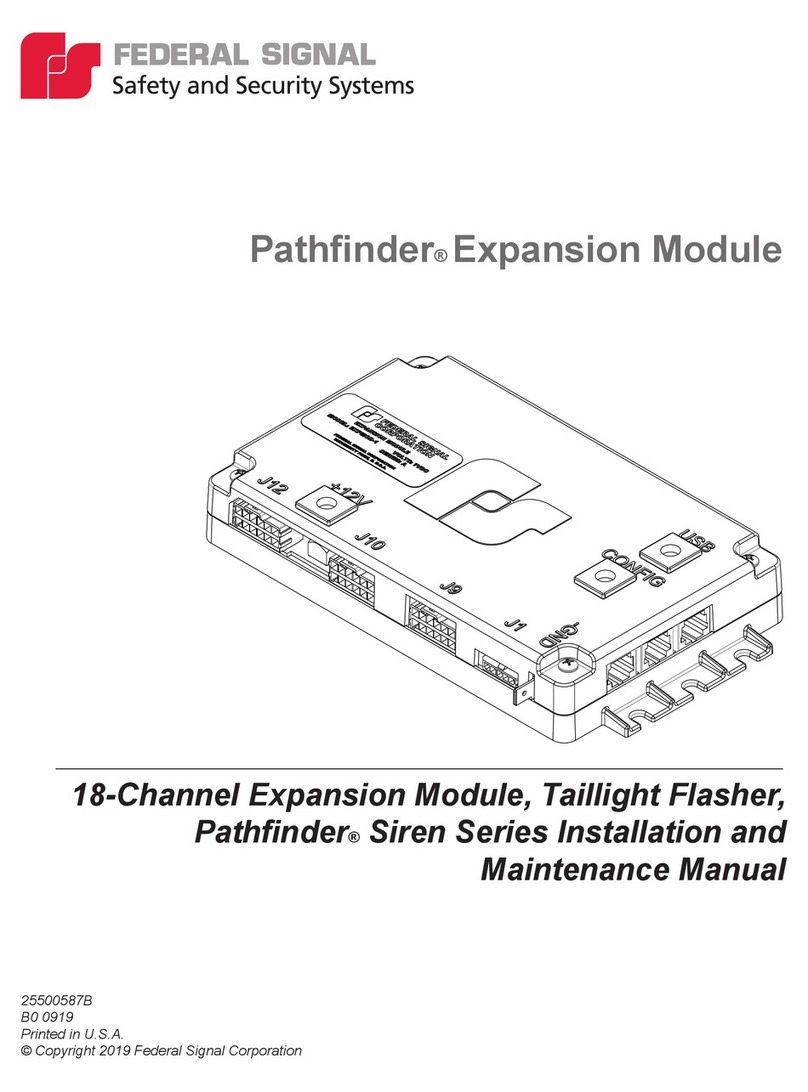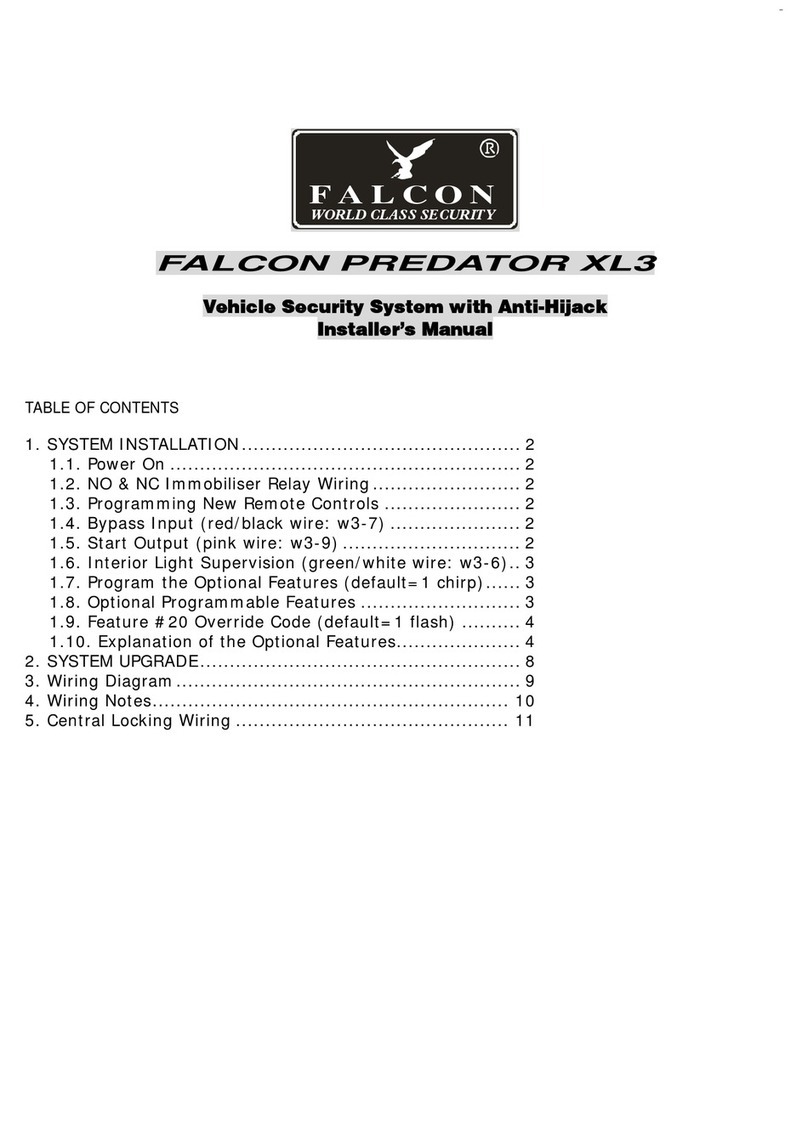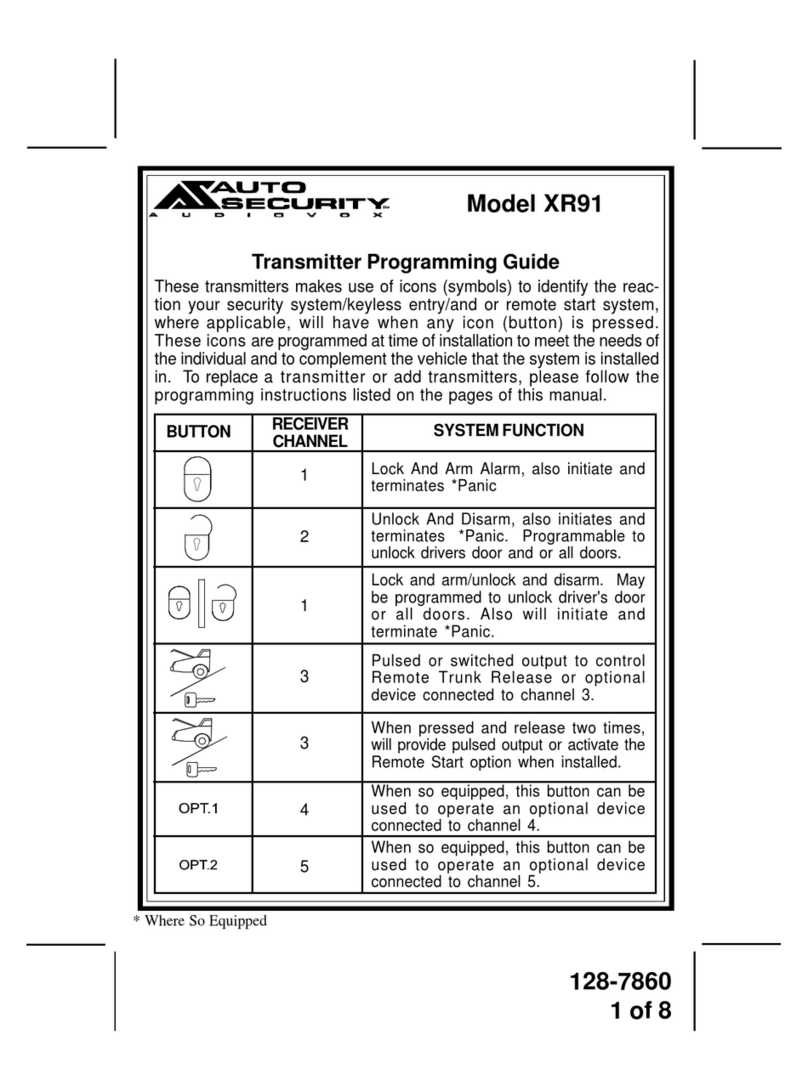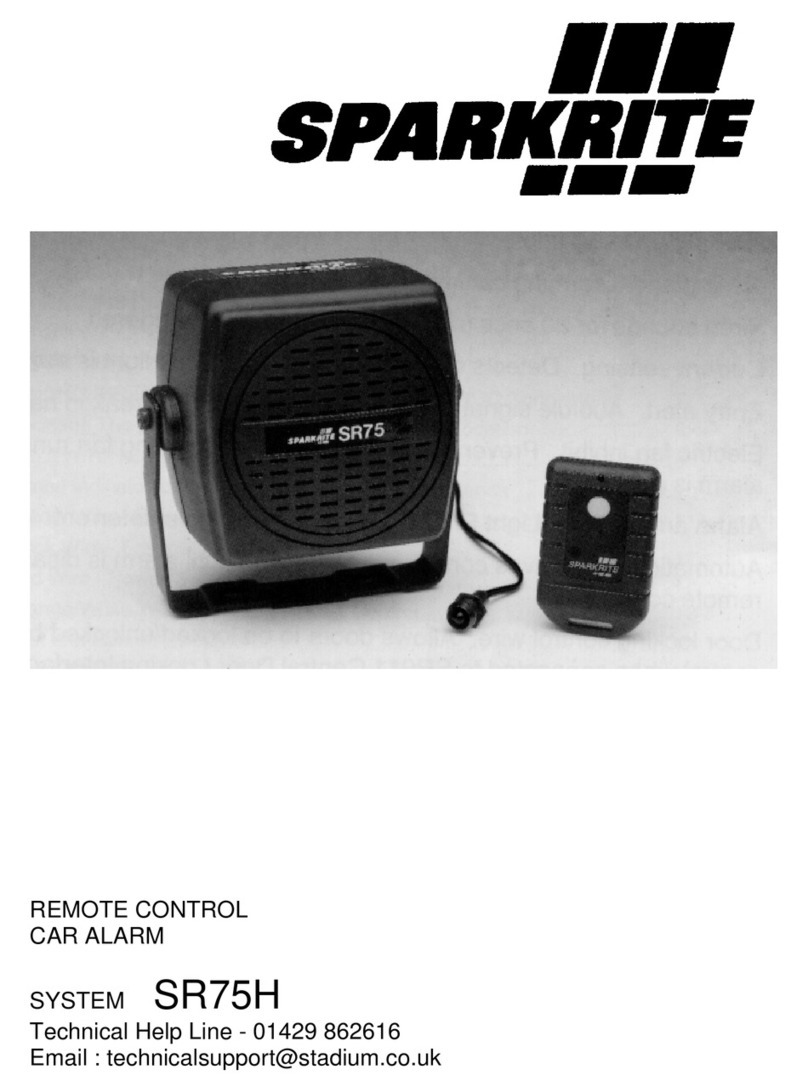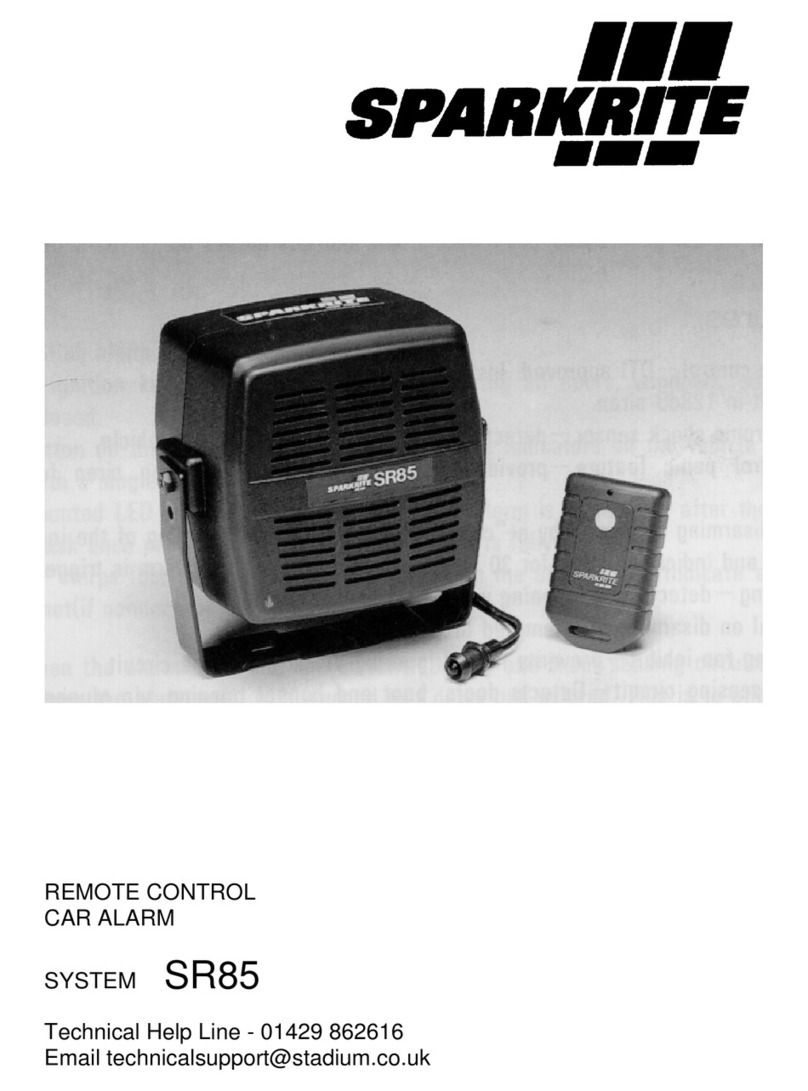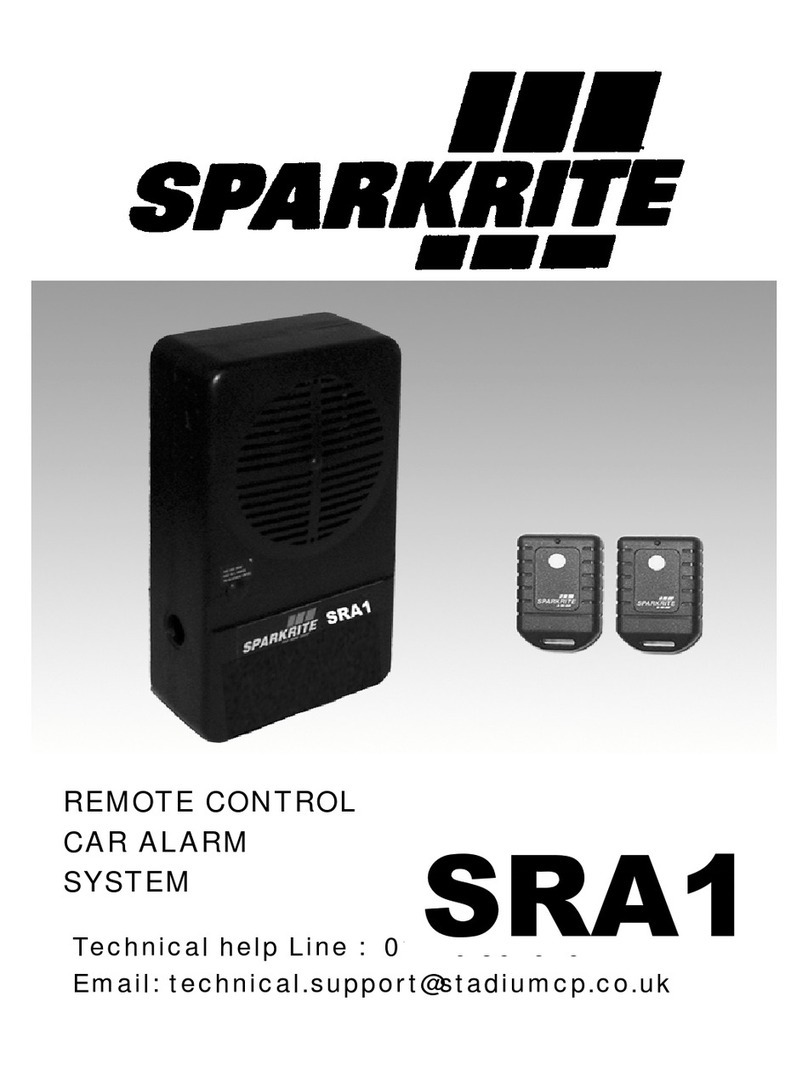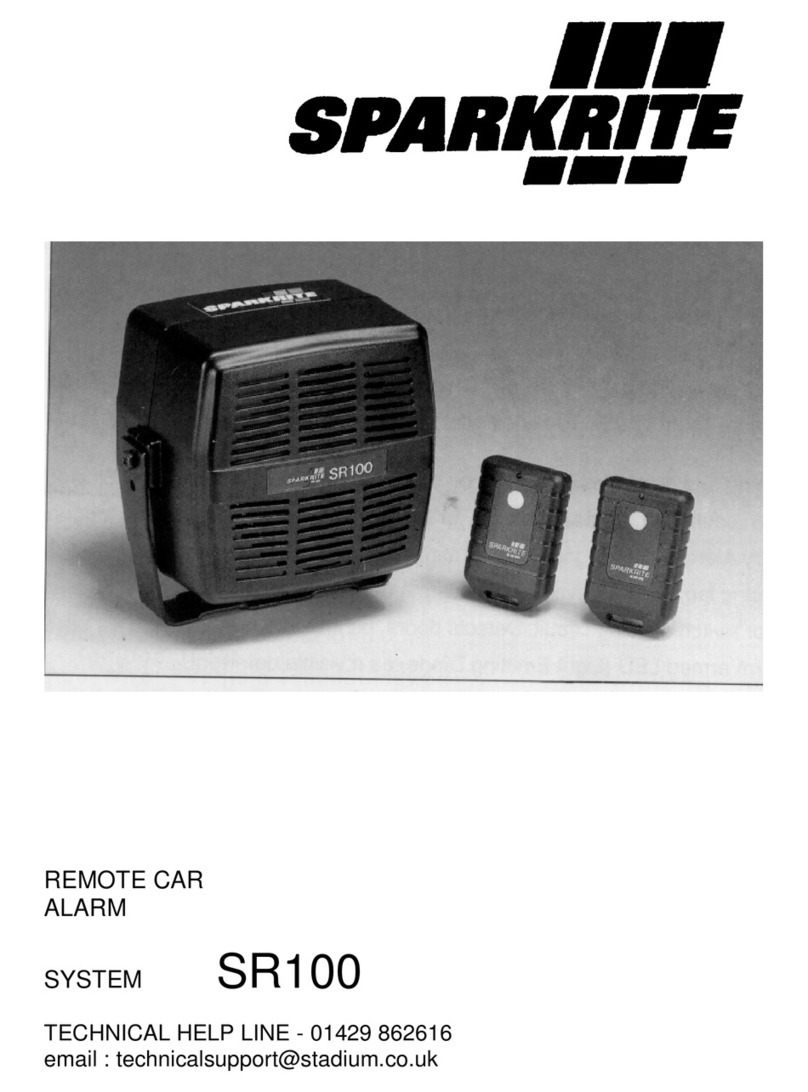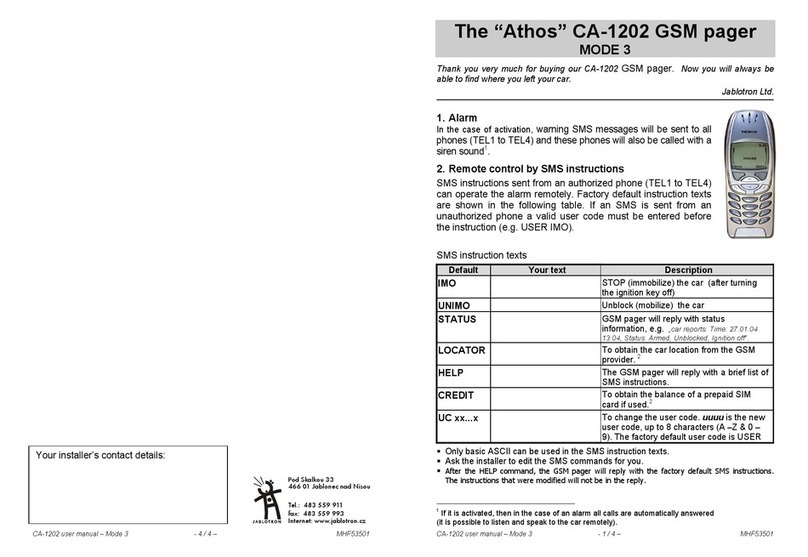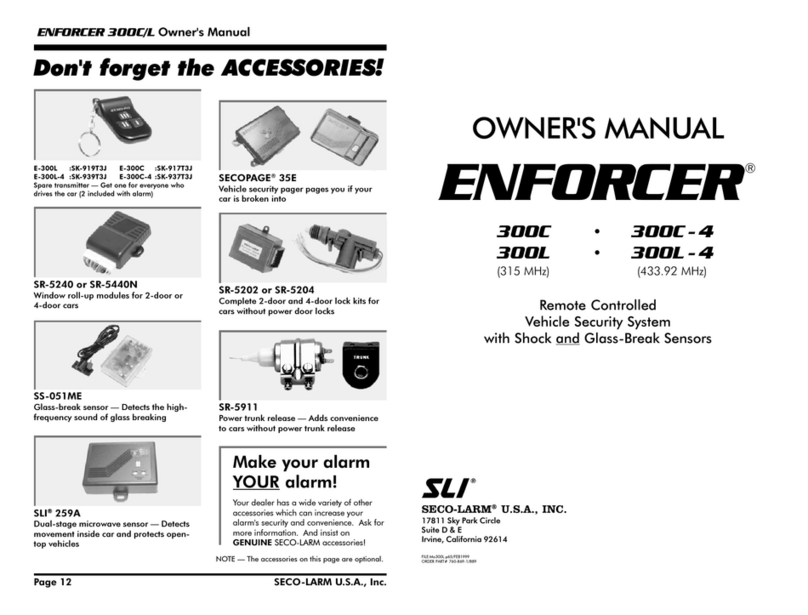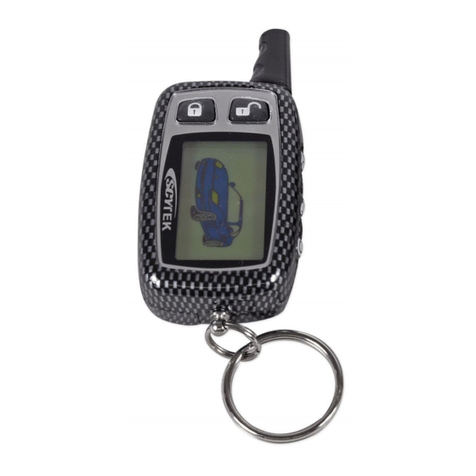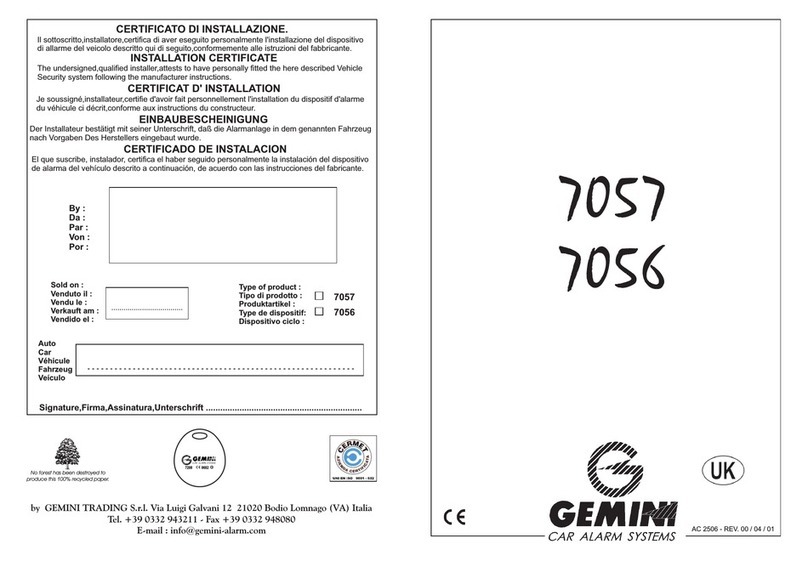
3
The Sparkrite SRA8 compact remote control car alarm system incorporates the latest
“state of the art” microprocessor technology offering the ultimate in product reliability
and performance. The unique easy-fit design offers easy installation and ensures
many years of trouble free operations
Table of Contents
SRA8 Features………………………………………………………….. 2
Operating Your Sparkrite SRA8 Alarm System……………………… 4
Arming Your Alarm……………………………………………………….4
Door Open Alert………………………………………………………….. 4
Disarming Your Alarm……………………………………….…………… 5
Entry Alert………………………………………………………………….5
Remote Panic…………………………………………………………….. 5
Passive Arming/Current Sensing Disable……………………………... 6
Valet Alarm Override Feature…………………………………………… 7
Fitting Instructions………………………………………………………… 8
Vehicle Wiring Test and Installation Notes……………………………... 8
Making Reliable Connections (and using IDC connector…………….. 9
Mounting the Main Alarm Module & Harness Location……………….. 10
Wiring Connections……………………………………………………….11
Armed Indicator LED……………………………………………………… 12
Purple and Grey Wires-Indicators……………………………………….. 12/13
Green wire-Alarm Antenna……………………………………………….13
Yellow wire Electric Fan Inhibit…………………………………………… 13
Blue wire Door Switches………………………………………………….. 14
Black Wire-Earth…………………………………………………………… 15
Orange/White Wire-Central Locking…………………………………….. 15
Pink Wire Ignition Input…………………………………………………….16
Brown/Orange Wire-Vehicle Immobilisation…………………………….16
Red Wire-Power Supply Current Sensing……………………………… 17
Boot and Bonnet Switches……………………………………………….18
Shock Sensor……………………………………………………………… 19
Testing the Alarm Installation…………………………………………….20
Ultrasonic Detector Unit………………………………………………….. 21/24
Trouble Shooting Guide………………………………………………….. 24/27
Additional Remote Control Transmitters……………………………….. 28
Technical Help Product & Approvals…………………………………… 28
Accessories for the SRA8 Alarm……………………………………….. 29

